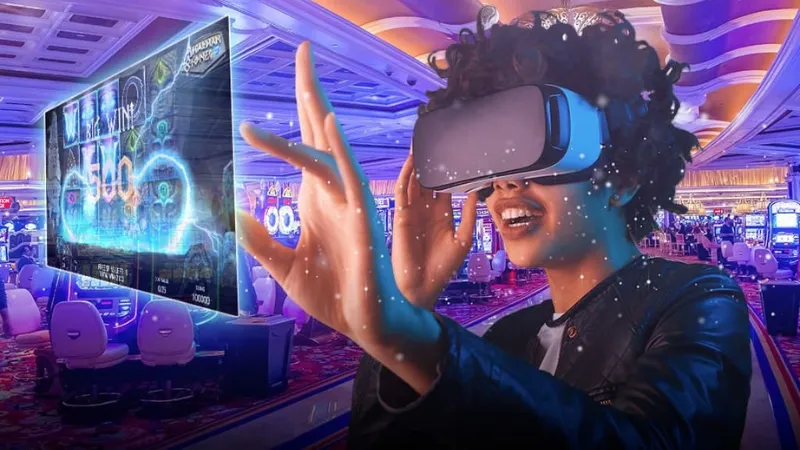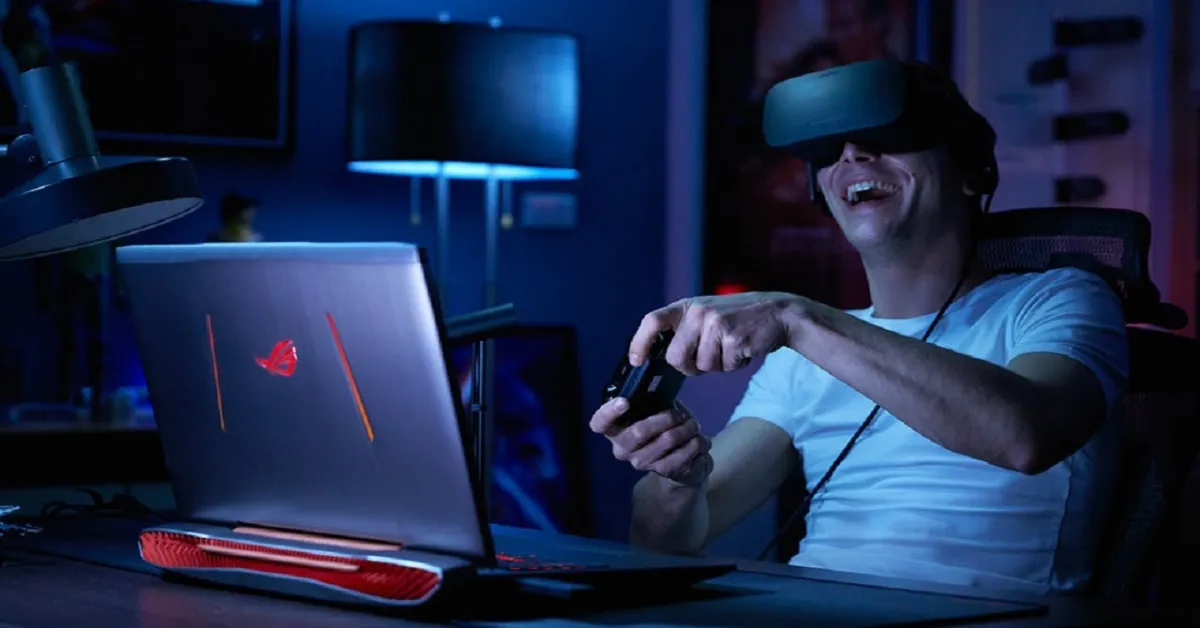Introduction
The world of VR creates the illusion of total immersion, which users can experience when they wear their headset, yet maintain total control of their movements and commands in this optimal environment. True virtual immersion appears because the system produces no stuttering and displays sharp textures in an entirely streamlined manner. Such gaming laptop optimization leads to real-world VR experiences.
The virtual reality system requires aggressive hardware demands. Your virtual reality experience requires perfect power performance, precision, and stability to provide smooth, immersive experiences without disturbing setbacks. A properly optimized gaming laptop remains the minimum requirement for delivering solid performance despite having powerful components. During combat, your system experiences frame rate slowdowns and headset disconnections while playing games. Sound familiar? Don’t panic.
This tutorial explains the steps to enhance your laptop VR performance. The guidance will present hardware choices and software rules to accomplish your VR goals. The problem of freezing in your gaming session can become perfectly smooth gameplay.
Step 1: Check If Your Laptop Meets VR Requirements
Before tweaking settings, confirm your laptop has the muscle to handle VR. Here’s the baseline:
Minimum VR Specs:
- CPU: Intel Core i5-4590 / AMD Ryzen 5 1500X
- GPU: NVIDIA GTX 1060 / AMD RX 580 (6GB VRAM)
- RAM: 8GB (16GB strongly recommended)
- Storage: HDD (but SSD preferred)
- Ports: USB 3.0, HDMI/DisplayPort
Recommended for buttery-smooth performance:
- CPU: Intel i7 / AMD Ryzen 7
- GPU: NVIDIA RTX 3060 / AMD RX 6700 XT
- RAM: 16 GB+
- Storage: NVMe SSD
Pro Tip: Use free tools like Steam VR Performance Test or Oculus Compatibility Check to benchmark your system. When your current specifications do not meet the mark, upgrades must become your top priority (we will explain this matter shortly).

Step 2: Optimize Your Laptop’s Hardware
A few strategic upgrades will cause mid-tier laptops to achieve superior performance.
- Update GPU Drivers Religiously
The graphics card is the most crucial component for VR devices. A device with old drivers immediately reduces computer speed.
- NVIDIA Users: Grab the latest Game Ready drivers via GeForce Experience. You should turn on automatic optimizations when playing these VR titles.
- Users with AMD processors should enable “Radeon Image Sharpening” through their Radeon Software interface to enhance their graphics quality.
- Upgrade to 16 GB+ RAM
The combination of VR games and background processes, including tracking software, drains the system memory. The problem with the limited 8GB RAM can be resolved by transitioning to an upgraded 16GB or 32GB RAM configuration, which allows you to multitask efficiently.
- Swap Your HDD for an NVMe SSD
Accessing a VR level that loads from a hard drive feels similar to using a dial-up modem. Installing NVMe SSDs dramatically decreases file loading periods while producing fewer texture disruptions.
- Cooling Is King
Thermal throttling kills performance. The optimal ways to lower laptop temperatures include using a cooling pad and quality GPU/CPU repasting with specialized thermal adhesive, except for experienced users who can manage CPU undervolting through Throttle Stop.
Step 3: Tweak Windows for Maximum VR Performance
The operating system Windows aims to redirect computer power to background applications repeatedly. Let’s fix that:
- Activate High-Performance Mode
- Click the Control Panel button, followed by Power Options, and select High Performance.
- The prevention of wireless headset removal occurs when users disable USB Selective Suspend through the Advanced Settings page.
- Murder Background Apps
- To stop background applications, press Ctrl + Shift + Esc and delete Chrome, Discord, and OneDrive from the Processes section.
- Users should disable startup bloat through the task manager by navigating to the startup section.
- GPU-Specific Tweaks
- NVIDIA: Users should open the NVIDIA Control Panel and access the “Manage 3D Settings.” Then, from the Power Management Mode menu, select “Prefer Maximum Performance.” Under the system settings, enable Low Latency Mode and Threaded Optimization.
- AMD: Users must activate Radeon Anti-Lag under Radeon Software while opting for Performance settings for Texture Filtering.
Step 4: Eliminate VR Tracking Issues and Latency
The experience of total immersion gets destroyed by faulty headset operation. Fix it with these hacks:
- Ditch Wireless (If You Can)
Wi-Fi adds latency. For PCVR headsets like Quest 2:
- A dedicated Oculus Link USB 3.2 Gen 1 cable or Wi-Fi 6 router connected in the same room will provide the best solution.
- Optimize Your Play Area
- Stay away from sunlight exposure and direct contact with reflective surfaces, such as TV screens with high gloss and mirrors.
- External trackers like Vive Base Stations should be placed at a high position while tilted downward.
- Prioritize Your Headset’s Traffic
- Set Quality of Service features on your router to establish VR traffic priority.

Step 5: Dial In Your VR Game Settings
The brute-force capabilities of RTX 4090 exceed the ability to brute-force terrible settings. Here’s the sweet spot:
- Lower Render Resolution: Begin the test at 100% resolution and reduce it if your frames start to decrease.
- Enable Reprojection: The ASW function on Oculus devices and Motion Smoothing on Steam VR devices help reduce GPU workload by half.
- Kill Shadows and Anti-Aliasing: These affect the tank’s performance. Compromise with “Medium” presets.
Pro Tip: Open VR Benchmark provides virtual testing capability to check adjustments without starting a complete application.
Troubleshoot Common VR Issues
Problem: Stuttering or crashes
- Fix: Decrease the Super sampling setting while closing RGB software programs through iCUE before limiting the frames to 90Hz.
The Headset not detected
- Fix: The solution includes updating USB drivers and testing alternate ports while skipping over adapters or hubs.
Problem: Overheating
- Fix: Maintain each session for one to two hours, and use compressed air to clean vents while using CPU/GPU under volt.
Your laptop should now function at Formula 1 race-car speed to play Half-Life: Alyx or Beat Saber without experiencing any slowdown. Making your Game Optimizer stronger for VR use requires ongoing actions to keep drivers updated while testing new game settings.
Start playing games by powering up your headset while clearing the play space ahead of you to enter an environment without lag or glitches. The available virtual realm exists for anyone to master. Game on!
